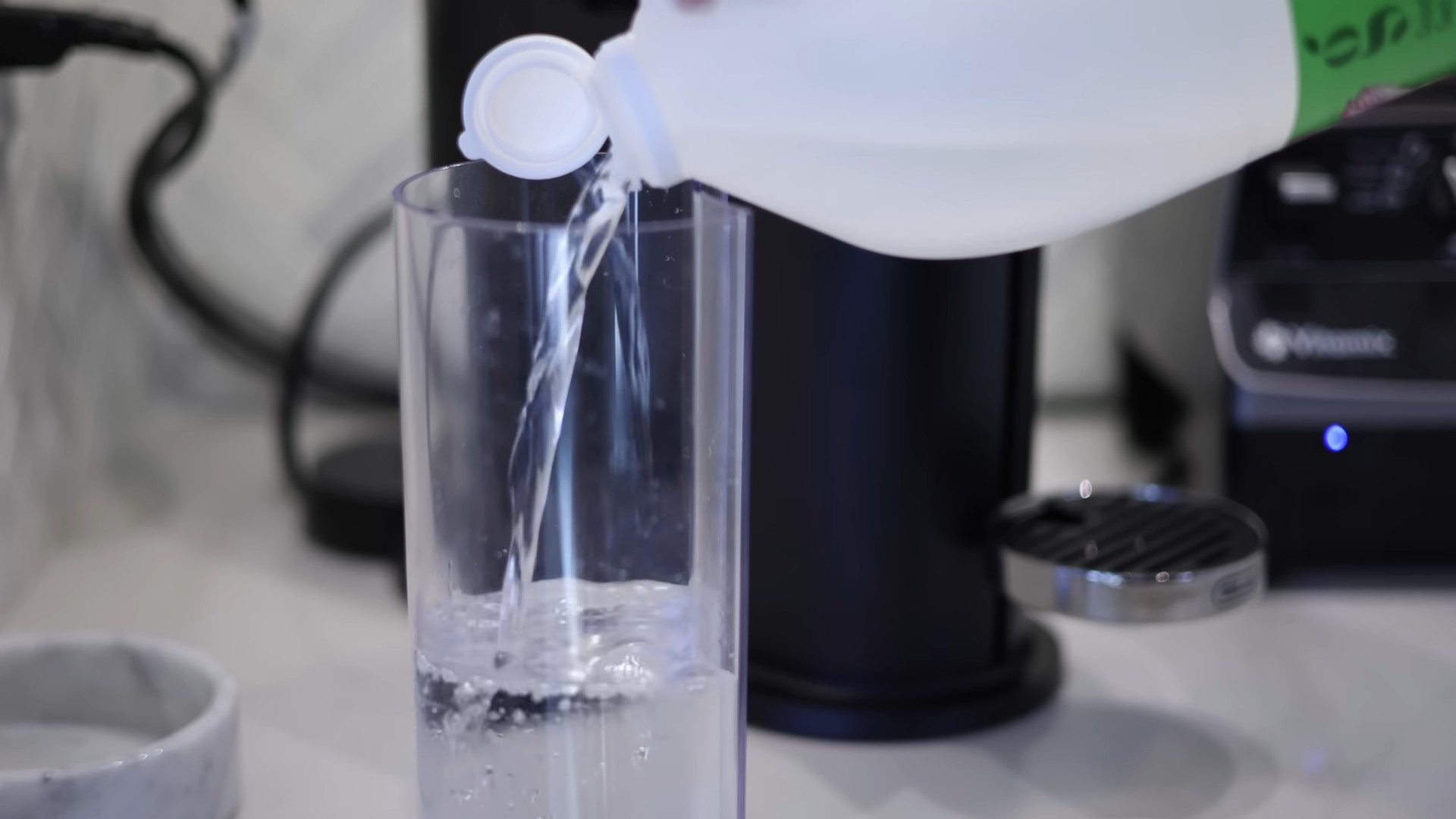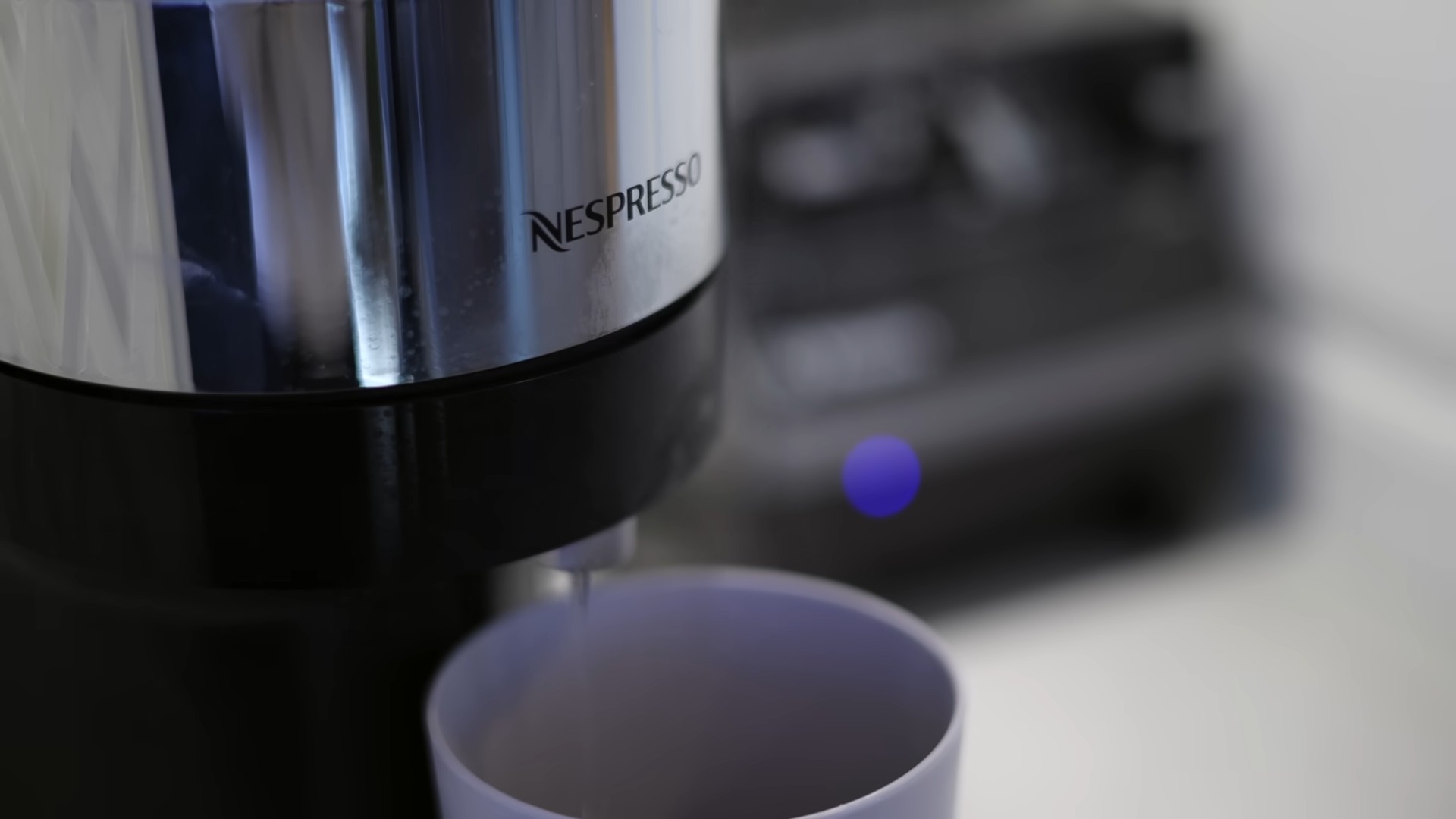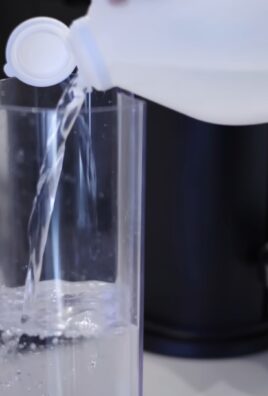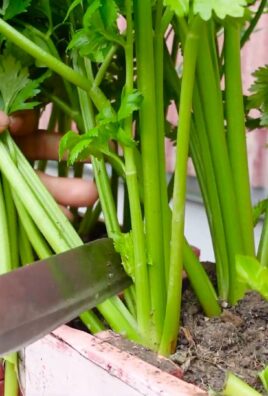Vinegar cleaning hacks – who knew this humble kitchen staple could be your secret weapon to a sparkling clean home? I’m always on the lookout for budget-friendly and effective ways to tackle household chores, and let me tell you, vinegar has been a game-changer! Forget those expensive, chemical-laden cleaners; vinegar offers a natural and surprisingly powerful alternative.
The use of vinegar for cleaning isn’t exactly new. In fact, its cleaning prowess dates back centuries! Ancient civilizations, including the Egyptians and Romans, utilized vinegar for its disinfectant and preservative properties. They understood its ability to cut through grease, eliminate odors, and even inhibit mold growth. It’s a testament to its effectiveness that we’re still relying on it today.
But why should you embrace vinegar cleaning hacks? Well, in today’s world, we’re all becoming more conscious of the products we use in our homes. Many commercial cleaners contain harsh chemicals that can be harmful to our health and the environment. Plus, let’s be honest, they can be pretty pricey! Vinegar offers a safe, eco-friendly, and incredibly affordable solution. From removing stubborn stains to deodorizing your refrigerator, the possibilities are endless. I’m excited to share my favorite DIY tricks that will transform the way you clean, saving you time, money, and stress. Get ready to unlock the cleaning power of vinegar!

Unlocking the Power of Vinegar: My Favorite DIY Cleaning Hacks
Vinegar. It’s not just for salad dressing anymore! I’ve discovered that this humble kitchen staple is a cleaning powerhouse, and I’m excited to share my favorite DIY vinegar cleaning hacks with you. Get ready to ditch those harsh chemicals and embrace the natural cleaning magic of vinegar!
Why Vinegar?
Before we dive in, let’s talk about why vinegar is such a fantastic cleaning agent. It’s a natural disinfectant, deodorizer, and degreaser. The acidity of vinegar helps to break down grime, mineral deposits, and even some types of mold. Plus, it’s incredibly affordable and readily available. I always have a gallon of white distilled vinegar on hand!
General Tips for Using Vinegar
* Dilution is Key: Always dilute vinegar with water, especially when cleaning delicate surfaces. A 50/50 solution is usually a good starting point.
* Test First: Before cleaning an entire surface, test the vinegar solution on a small, inconspicuous area to ensure it doesn’t cause any damage or discoloration.
* Ventilation is Important: Vinegar has a strong odor, so make sure to open windows or turn on a fan while cleaning. The smell dissipates quickly, but it’s best to be prepared.
* Don’t Mix with Bleach: This is crucial! Mixing vinegar with bleach creates toxic chlorine gas, which is extremely dangerous.
* Use White Distilled Vinegar: This is the best type of vinegar for cleaning because it’s clear and doesn’t contain any additives that could stain surfaces.
Hack 1: Sparkling Clean Showerhead
Hard water deposits can clog your showerhead, reducing water pressure and making your shower less enjoyable. Here’s how I use vinegar to restore my showerhead to its former glory:
Materials You’ll Need:
* White distilled vinegar
* Plastic bag (gallon-sized works well)
* Rubber band or twist tie
Step-by-Step Instructions:
1. Fill the Bag: Pour enough white distilled vinegar into the plastic bag to completely submerge your showerhead.
2. Secure the Bag: Carefully position the bag over the showerhead, ensuring the showerhead is fully immersed in the vinegar. Use a rubber band or twist tie to secure the bag tightly around the showerhead neck.
3. Soak Overnight: Let the showerhead soak in the vinegar overnight (or for at least a few hours). This allows the vinegar to dissolve the mineral deposits.
4. Remove and Rinse: Remove the bag and discard the vinegar. Turn on the shower and let the water run for a few minutes to flush out any remaining vinegar and loosened deposits.
5. Wipe Clean: Use a clean cloth or sponge to wipe away any remaining residue. If necessary, use an old toothbrush to scrub away stubborn deposits.
I’ve found that this method works wonders for removing even the most stubborn hard water buildup. My showerhead always feels like new after this treatment!
Hack 2: Deodorizing Your Washing Machine
Over time, washing machines can develop a musty odor due to detergent buildup and mildew growth. Vinegar is a fantastic natural deodorizer that can help keep your washing machine smelling fresh.
Materials You’ll Need:
* White distilled vinegar
Step-by-Step Instructions:
1. Empty the Washing Machine: Make sure your washing machine is completely empty.
2. Pour in the Vinegar: Pour 2 cups of white distilled vinegar into the detergent dispenser.
3. Run a Hot Cycle: Run a complete washing cycle on the hottest water setting.
4. Repeat if Necessary: If the odor persists, repeat the process.
I usually do this once a month to keep my washing machine smelling clean and fresh. It’s a simple and effective way to prevent unpleasant odors.
Hack 3: Cleaning Your Microwave
Microwaves can get pretty gross with splattered food and grease. Vinegar can help loosen the grime and make it easier to wipe clean.
Materials You’ll Need:
* White distilled vinegar
* Water
* Microwave-safe bowl
* Sponge or cloth
Step-by-Step Instructions:
1. Mix Vinegar and Water: In a microwave-safe bowl, combine equal parts white distilled vinegar and water (e.g., 1 cup vinegar and 1 cup water).
2. Microwave the Solution: Place the bowl in the microwave and heat on high for 5-10 minutes, or until the solution is boiling and the microwave is filled with steam.
3. Let it Stand: Carefully remove the bowl (it will be hot!) and let the microwave stand with the door closed for another 5-10 minutes. The steam will help loosen the grime.
4. Wipe Clean: Use a sponge or cloth to wipe down the interior of the microwave. The grime should come off easily.
5. Rinse and Dry: Rinse the sponge or cloth and wipe the interior of the microwave again to remove any remaining vinegar residue. Dry with a clean cloth.
This method is so much easier than scrubbing the microwave for ages! The steam does all the hard work for you.
Hack 4: Cleaning Windows and Mirrors for a Streak-Free Shine
Say goodbye to streaks and hello to sparkling clean windows and mirrors! Vinegar is a natural and effective window cleaner.
Materials You’ll Need:
* White distilled vinegar
* Water
* Spray bottle
* Microfiber cloth or newspaper
Step-by-Step Instructions:
1. Mix Vinegar and Water: In a spray bottle, combine equal parts white distilled vinegar and water.
2. Spray the Surface: Spray the vinegar solution onto the window or mirror.
3. Wipe Clean: Use a clean microfiber cloth or crumpled newspaper to wipe the surface clean. Wipe in overlapping strokes to avoid streaks.
4. Dry if Necessary: If any streaks remain, use a dry microfiber cloth to buff the surface.
I prefer using newspaper because it doesn’t leave any lint behind, but a microfiber cloth works just as well. The key is to use a clean cloth and wipe in overlapping strokes.
Hack 5: Unclogging Drains
A clogged drain is a common household problem, but you don’t always need harsh chemicals to fix it. Vinegar and baking soda can create a natural fizzing action that helps to break down clogs.
Materials You’ll Need:
* Baking soda
* White distilled vinegar
* Hot water
Step-by-Step Instructions:
1. Pour in Baking Soda: Pour about 1/2 cup of baking soda down the drain.
2. Add Vinegar: Pour 1 cup of white distilled vinegar down the drain.
3. Let it Fizz: Let the mixture fizz for about 30 minutes.
4. Flush with Hot Water: After 30 minutes, flush the drain with hot water.
I usually repeat this process a couple of times if the drain is particularly clogged. It’s a much safer and more environmentally friendly alternative to chemical drain cleaners.
Hack 6: Removing Coffee Stains from Mugs
Those stubborn coffee stains in your favorite mugs can be a pain to remove. Vinegar to the rescue!
Materials You’ll Need:
* White distilled vinegar
* Salt (optional, for extra scrubbing power)
* Sponge or cloth
Step-by-Step Instructions:
1. Pour in Vinegar: Pour a small amount of white distilled vinegar into the stained mug.
2. Add Salt (Optional): If the stains are particularly stubborn, add a teaspoon of salt to the vinegar. The salt will act as a gentle abrasive.
3. Scrub: Use a sponge or cloth to scrub the stains.
4. Rinse: Rinse the mug thoroughly with water.
The vinegar will help to loosen the coffee stains, making them easier to scrub away. My mugs always look brand new after this treatment!
Hack 7: Cleaning Your Dishwasher
Just like washing machines, dishwashers can also develop unpleasant odors and buildup over time. Vinegar can help keep your dishwasher clean and fresh.
Materials You’ll Need:
* White distilled vinegar
* Dishwasher-safe bowl
Step-by-Step Instructions:
1. Empty the Dishwasher: Make sure your dishwasher is completely empty.
2. Place Vinegar in Bowl: Fill a dishwasher-safe bowl with 1 cup of white distilled vinegar.
3. Place Bowl in Dishwasher: Place the bowl on the top rack of the dishwasher.
4. Run a Hot Cycle: Run a complete washing cycle on the hottest water setting.
This will help to remove grease, food particles, and mineral deposits from your dishwasher. I do this about once a month to keep my dishwasher running smoothly and smelling fresh.

Conclusion
So, there you have it! Unlocking the power of vinegar for a sparkling clean home is not just a trend; it’s a revolution in eco-friendly and budget-conscious cleaning. We’ve explored a range of incredible vinegar cleaning hacks that can transform your cleaning routine, from banishing stubborn hard water stains to deodorizing your refrigerator with ease.
Why is this a must-try? Because it’s effective, affordable, and environmentally responsible. Commercial cleaners often come with a hefty price tag and a list of ingredients that are difficult to pronounce, let alone understand. They can also be harsh on your skin and release harmful chemicals into your home. Vinegar, on the other hand, is a natural powerhouse that’s gentle on your family, your pets, and the planet.
But the benefits don’t stop there. Vinegar is incredibly versatile. You can customize your cleaning solutions by infusing vinegar with citrus peels for a fresh scent, adding essential oils for aromatherapy benefits, or combining it with baking soda for extra scrubbing power.
Here are a few suggestions and variations to get you started:
* Infused Vinegar: Add orange, lemon, or grapefruit peels to a jar of white vinegar. Let it steep for a week or two, then strain and use as a fragrant all-purpose cleaner.
* Vinegar and Baking Soda Paste: Mix vinegar and baking soda to form a paste for tackling tough stains on grout, ovens, and stovetops.
* Vinegar and Essential Oils: Add a few drops of your favorite essential oils, such as lavender, tea tree, or eucalyptus, to your vinegar cleaning solutions for added fragrance and antibacterial properties.
* Vinegar as a Fabric Softener: Add 1/2 cup of white vinegar to your washing machine’s fabric softener dispenser for softer, brighter clothes.
We’ve only scratched the surface of what vinegar can do. From cleaning windows and mirrors to unclogging drains and removing mildew, the possibilities are endless. The key is to experiment and find what works best for you and your home.
We wholeheartedly encourage you to embrace these vinegar cleaning hacks and experience the difference for yourself. Ditch the harsh chemicals, save money, and enjoy a cleaner, healthier home.
But don’t just take our word for it! We want to hear from you. Try these hacks, experiment with your own variations, and share your experiences in the comments below. Let us know what worked, what didn’t, and any tips or tricks you’ve discovered along the way. Together, we can unlock the full potential of vinegar and create a cleaner, greener future for ourselves and generations to come. So go ahead, grab that bottle of vinegar, and get cleaning! Your home (and your wallet) will thank you.
Frequently Asked Questions (FAQ)
Is it safe to use vinegar on all surfaces?
While vinegar is a fantastic cleaner, it’s not suitable for all surfaces. Avoid using it on natural stone surfaces like marble, granite, and limestone, as the acidity can etch and damage them. It’s also best to avoid using vinegar on waxed wood furniture, as it can strip the wax finish. Always test vinegar on an inconspicuous area before applying it to a larger surface.
What type of vinegar is best for cleaning?
White distilled vinegar is the most commonly recommended type of vinegar for cleaning. It’s inexpensive, readily available, and has a high acidity level, making it effective at cutting through grease, grime, and bacteria. Avoid using other types of vinegar, such as apple cider vinegar or balsamic vinegar, as they can stain surfaces due to their color.
Can I mix vinegar with bleach?
Never mix vinegar with bleach! This combination creates toxic chlorine gas, which can be extremely harmful and even fatal. Always use vinegar and bleach separately, and rinse surfaces thoroughly with water after using either product.
How do I get rid of the vinegar smell after cleaning?
The vinegar smell typically dissipates within a few hours. To speed up the process, you can open windows and doors to ventilate the area. You can also add a few drops of essential oils, such as lavender or lemon, to your vinegar cleaning solution to mask the smell. Another trick is to simmer a pot of water with citrus peels or spices like cinnamon and cloves to freshen the air.
Can vinegar kill mold?
Yes, vinegar is effective at killing mold and mildew. Spray undiluted white vinegar onto the affected area, let it sit for an hour, and then scrub with a brush or sponge. Rinse with water and dry thoroughly. For stubborn mold, you may need to repeat the process. However, for large-scale mold infestations, it’s best to consult with a professional mold remediation service.
How can I use vinegar to clean my washing machine?
To clean your washing machine with vinegar, add 2 cups of white vinegar to the detergent dispenser and run a hot water cycle. This will help remove detergent buildup, mineral deposits, and odors. You can also clean the rubber gasket around the door with a vinegar solution to prevent mold and mildew growth. Repeat this process every month or two to keep your washing machine clean and fresh.
Is vinegar safe for septic systems?
Yes, vinegar is generally safe for septic systems. It’s a natural and biodegradable substance that won’t harm the beneficial bacteria in your septic tank. However, it’s important to use vinegar in moderation and avoid pouring large quantities down the drain at once.
Can I use vinegar to clean my coffee maker?
Yes, vinegar is an excellent way to clean your coffee maker. Fill the water reservoir with a solution of equal parts white vinegar and water. Run a full brewing cycle, then discard the vinegar solution. Repeat the process with fresh water to rinse out any remaining vinegar. This will help remove mineral buildup and improve the taste of your coffee.
How do I use vinegar to unclog a drain?
Pour about 1 cup of baking soda down the drain, followed by 1 cup of white vinegar. Let the mixture fizz for about 30 minutes, then flush with hot water. The chemical reaction between the baking soda and vinegar will help break down clogs and clear the drain. For stubborn clogs, you may need to repeat the process or use a plunger.
Can vinegar remove hard water stains?
Yes, vinegar is very effective at removing hard water stains. Soak a cloth or sponge in white vinegar and apply it to the affected area. Let it sit for a few minutes, then scrub with a brush or sponge. Rinse with water and dry thoroughly. For stubborn stains, you may need to repeat the process or use a stronger vinegar solution.




Leave a Comment